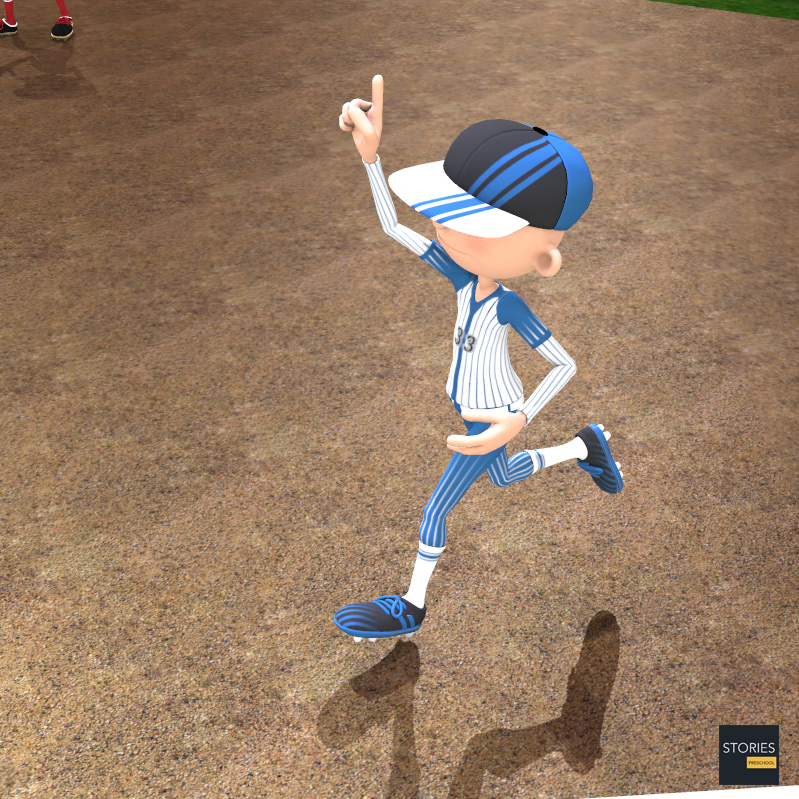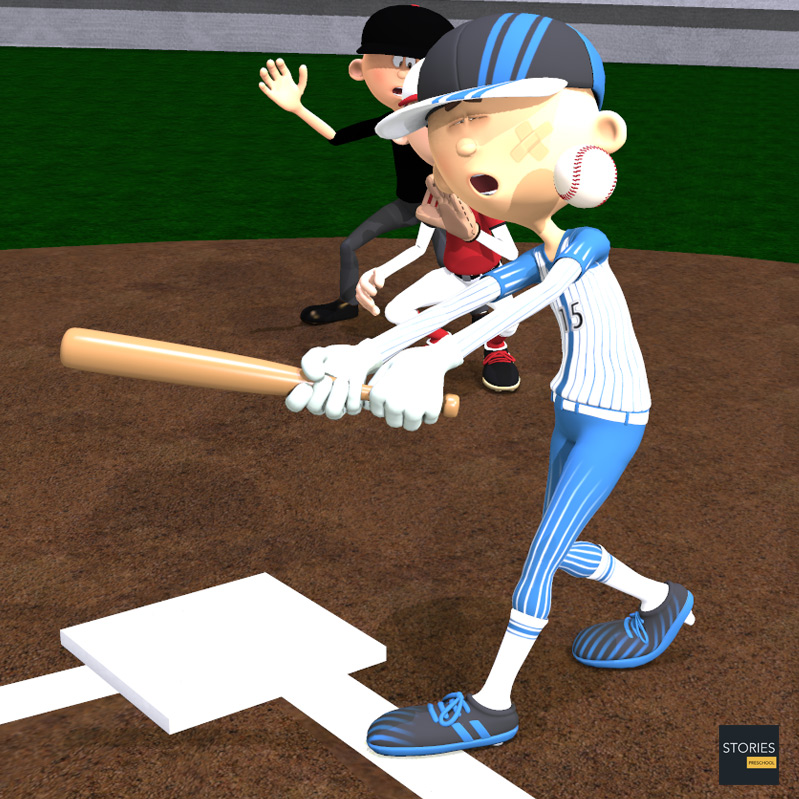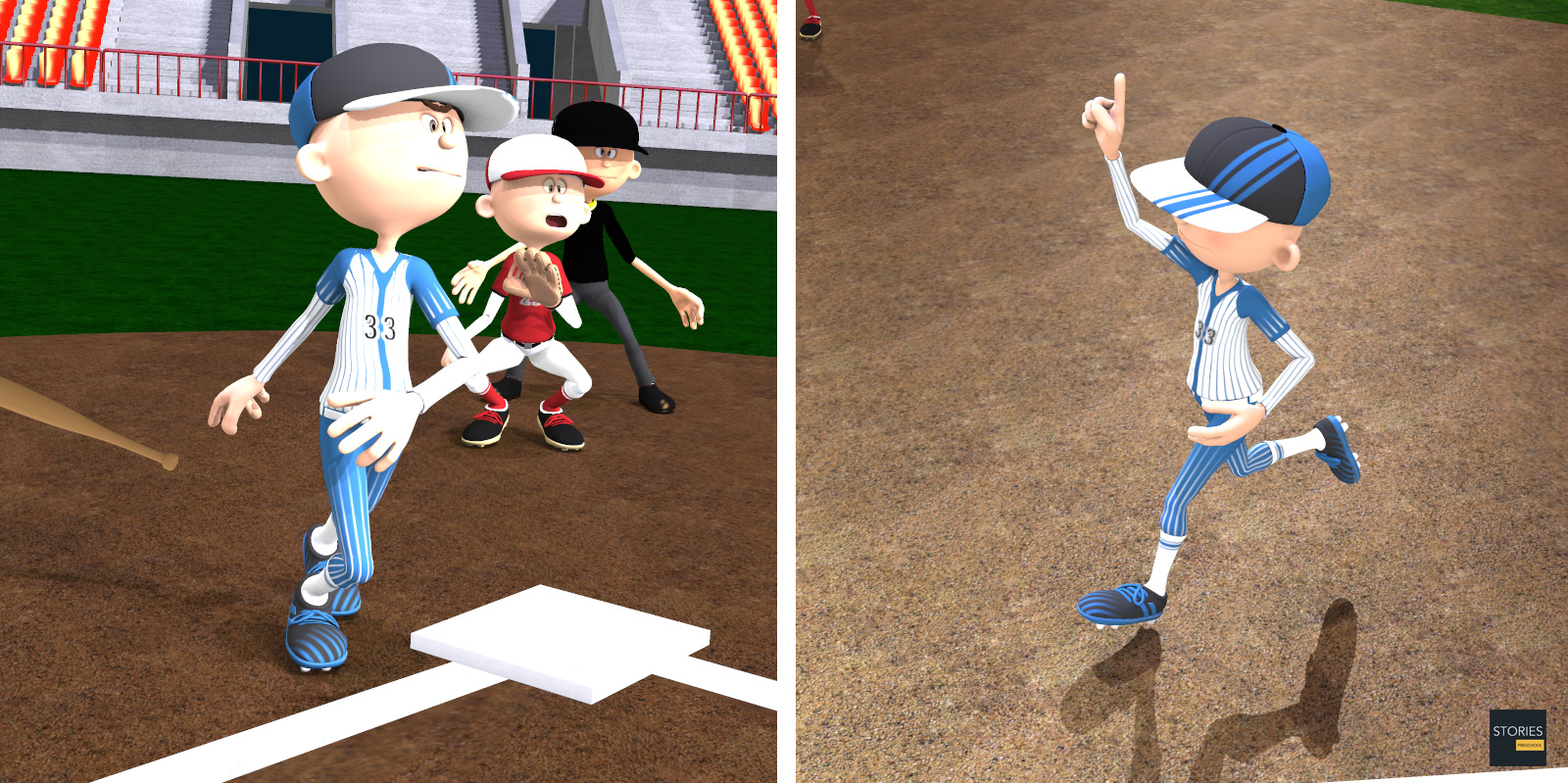Baseball

Walk Base on Balls
A base on balls (BB), also known as a walk, occurs in baseball when a batter receives four pitches that the umpire calls balls, and is then entitled to reach first base without the possibility of being called out. The base on balls is defined in Section 2.00 of baseball's Official Rules, and further detail is given in 6.08(a).

The term "base on balls" distinguishes a walk from the other manners in which a batter can be awarded first base without liability to be put out (ex. hit by pitch, catcher's interference). Though a base on balls, catcher interference, or a batter hit-by-a-pitched-ball (HPB) all result in the batter (and possibly runners on base) being awarded a base, the term "walk" usually refers only to a base on balls, and not the other methods of reaching base without the bat touching the ball. An important difference is that for a hit batter or catcher's interference, the ball is dead and no one may advance unless forced; the ball is live after a walk.
A batter who draws a base on balls is commonly said to have been "walked" by the pitcher. When the batter is walked, runners advance one base without liability to be put out only if forced to vacate their base to allow the batter to take first base. If a batter draws a walk with the bases loaded, all preceding runners are forced to advance, including the runner on third base who is forced to home plate to score a run; when a run is forced on a walk, the batter is credited with an RBI per rule 10.04.
Receiving a base on balls does not count as a hit or an at bat for a batter but does count as a time on base and a plate appearance. Therefore, a base on balls does not affect a player's batting average, but it can increase his on-base percentage.

A hit by pitch is not counted statistically as a walk, though the effect is mostly the same, with the batter receiving a free pass to first base. One exception is that on a HBP (hit-by-pitch), the ball is dead. On a HBP, any runners attempting to steal on the play must return to their original base unless forced to the next base anyway.
When a walk occurs, the ball is still live, any runner not forced to advance may nevertheless attempt to advance at his own risk, which might occur on a steal play, passed ball, or wild pitch. Also, because a ball is live when a base on balls occurs, runners on base forced to advance one base may attempt to advance beyond one base, at their own risk. The batter-runner himself may attempt to advance beyond first base, at his own risk. Rule 6.08 addresses this matter as well. An attempt to advance an additional base beyond the base awarded might occur when ball four is a passed ball or a wild pitch.
Intentional base on balls
A subset of the base on balls, an intentional base on balls (IBB) or intentional walk is when the pitcher deliberately pitches the ball away from the batter in order to issue a base on balls. As with any other walk, an intentional walk entitles the batter to first base without liability to be put out, and entitles any runners to advance if forced. Intentional walks are a strategic defensive maneuver, commonly done to bypass one hitter for one the defensive team believes is less likely to initiate a run-scoring play (ex. a home run, sacrifice fly, or RBI base hit). Teams also commonly use intentional walks to set up a double play or force out situation for the next batter.

Intentional walks do carry risks, however. They carry an obvious, inherent risk: they give the offensive team another runner on base, without any effort on their part, who could potentially score a run. They may carry additional risks.
An intentional walk is signaled by the catcher standing and extending one arm to the side away from the batter. The pitcher then pitches the ball to that side several feet outside from home plate, usually outside the reach of the batter. A ball pitched in this manner is called an intentional ball and counts as a ball in the pitcher's pitch count. In order to count as an intentional ball, the ball must be legally pitched, example, the pitcher's foot must be on the pitcher's rubber, the catcher must be in the catcher's box, and the batter must be in the batter's box appearing ready to take a pitch at the time the ball is thrown. An intentional walk may be signaled at any time during the batter's turn at the plate; in these cases only enough additional intentional balls need to be thrown to bring the total to four. Only walks issued by the catcher signaling as described above are recorded as intentional walks; walks issued without the catcher signaling – even if the pitches are intentionally thrown outside of the strike zone – are not recorded as intentional.
Because intentional walks involve throwing a ball, from the pitcher's usual spot on the pitcher's rubber, to a target that is significant distance from the plate and the batter, they involve some mental and physical adjustment, and/or re-adjustment to the subsequent batter. These could subtly affect or interrupt a pitcher's focus, mechanics, and/or rhythm; and, in turn, at least momentarily affect the pitcher's command, leading to an 'unintentional' walk to the next batter. The 'unintentional' walk following an intentional walk is not common, but is also not that rare.
Another risk taken by the defensive team in issuing a base on balls is that since intentional balls must be pitched in a legal manner, they can legally become wild pitches or passed balls. Likewise, a baserunner can attempt to steal a base, or the batter can choose to swing at an intentional ball; however, these rarely occur since taking these risks is rarely more beneficial to the offensive team than allowing the walk.
Intentional walks also carry other nuanced risks. They might give the subsequent batter the strategic advantage of anticipating that the pitcher will avoid walking him. This subsequent batter might then more aggressively anticipate a pitch in the strike zone. If this batter guesses correctly, he could achieve more success than he otherwise would. Moreover, a subsequent batter might perceive an immediately preceding intentional walk as a slight to his abilities; if such a batter performs better when he feels underestimated by his opposition, an intentional walk could provide a spark.
Though intentional walks are recorded as such in the records of the official scorer, they are combined with standard, non-intentional walks when calculating a player's on-base percentage, and have only received a separate column in a player's statistics since 1955.
Batters, on occasion, have been given intentional walks with the bases loaded (effectively giving the offensive team a risk-free run), although this occurs very infrequently.
A common nickname for the intentional walk is four-finger salute, since most managers call for an intentional walk by holding up four fingers. Outside the professional leagues, such as in high school or college baseball, the manager may simply request to the plate umpire to let the batter go to first instead of having the pitcher waste four outside pitches.
SPORTS

RESOURCES
This article uses material from the Wikipedia articles "Baseball" and "Base on balls", which is released under the Creative Commons Attribution-Share-Alike License 3.0.
© Stories Preschool. All Rights Reserved.












